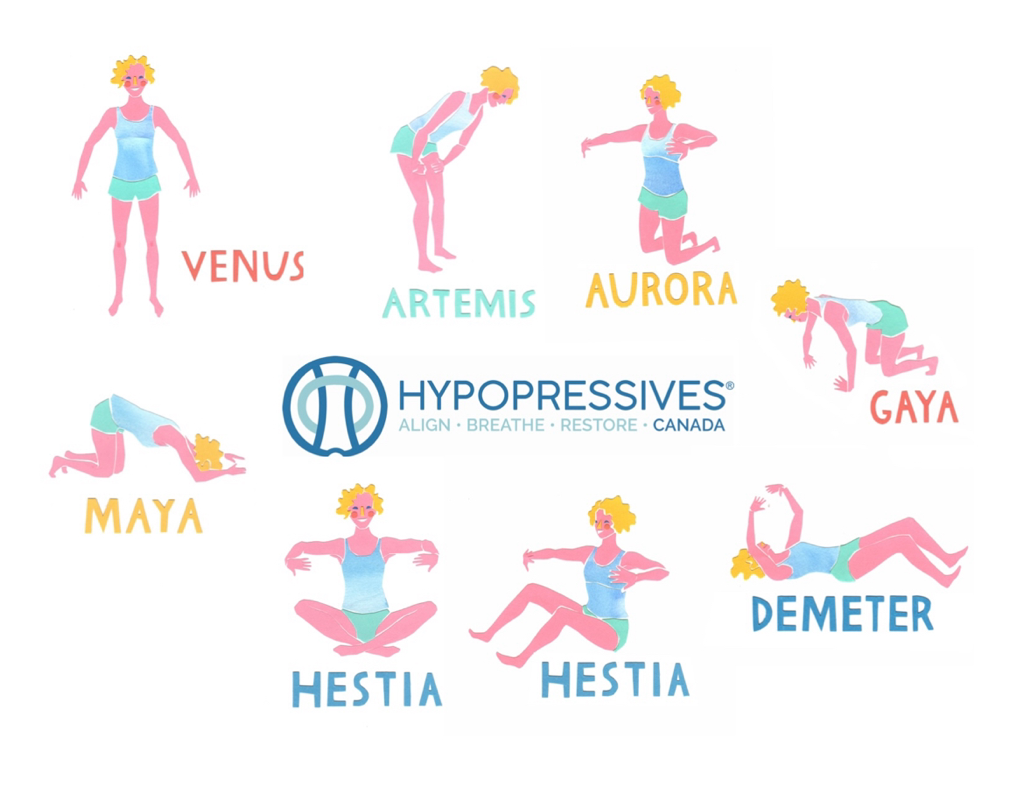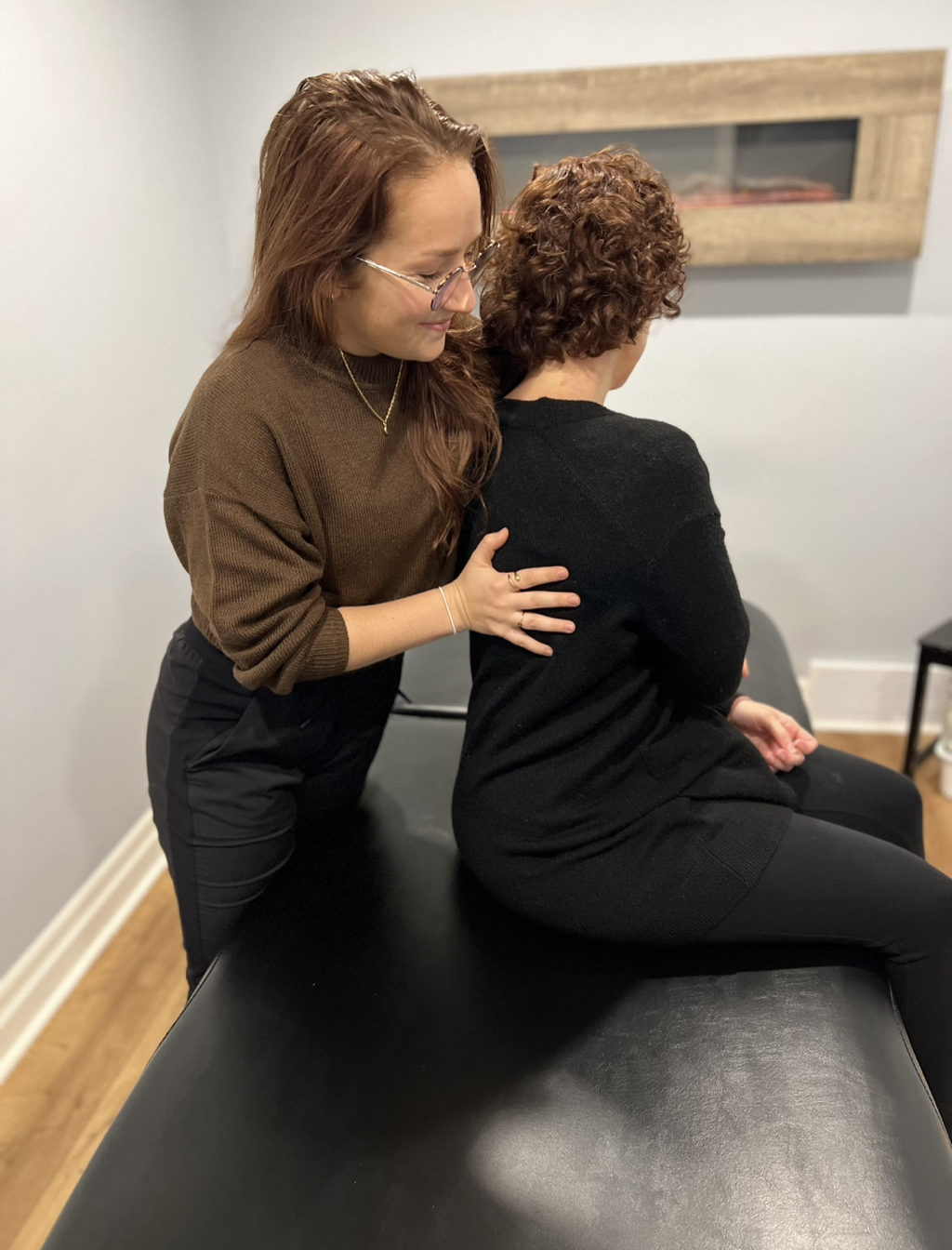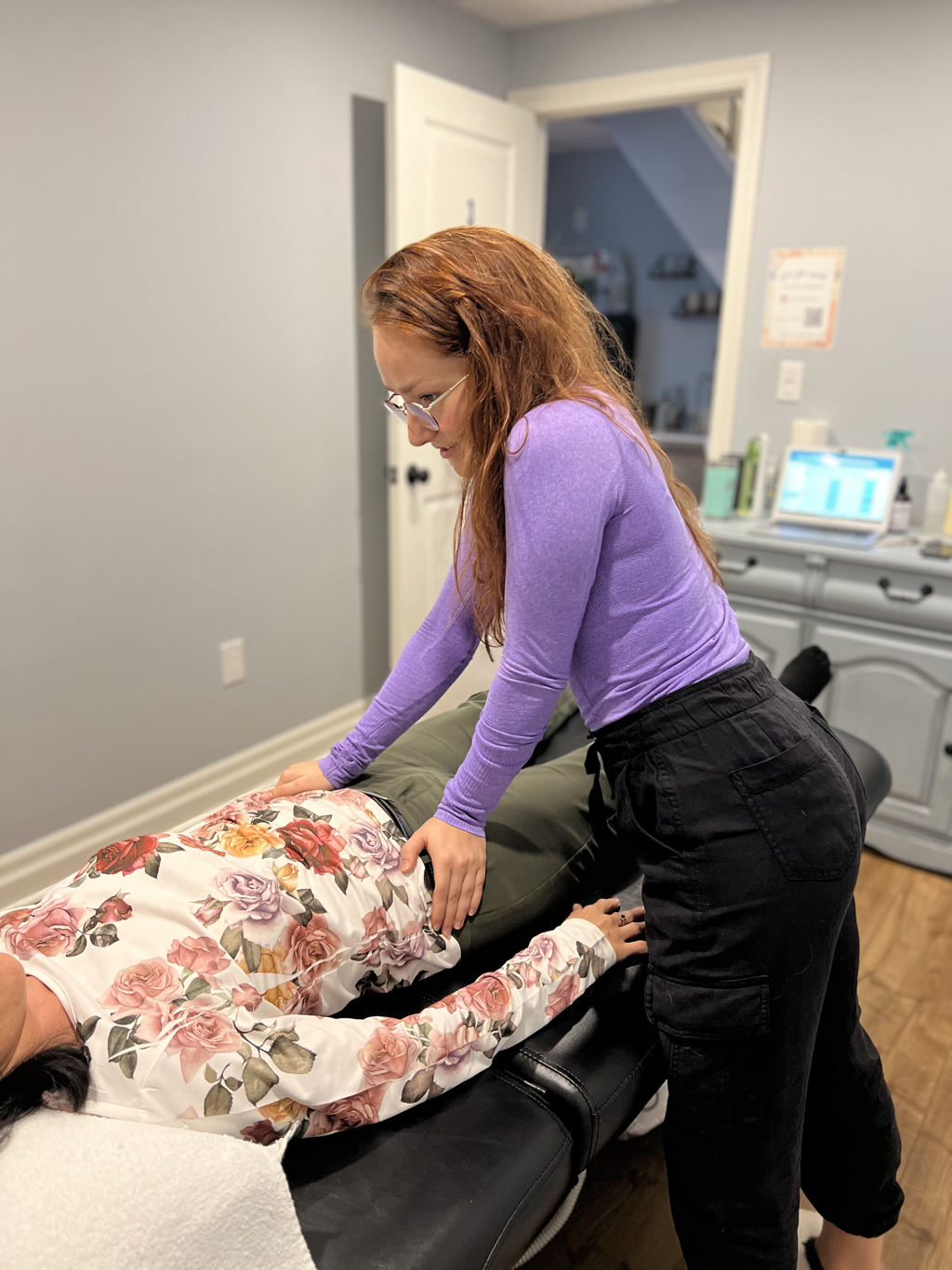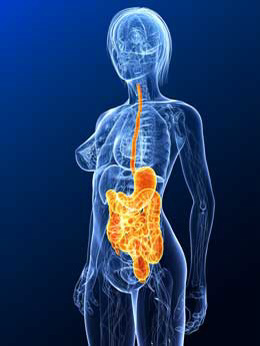Hypopressives for Pelvic Health, Postpartum Recovery, Diastasis Recti & Urinary Incontinence2/5/2024 Hypopressives are becoming more popular and now available with Dr. Meredith Hodges at Dalhousie Health & Wellness. Hypopressives aim to reprogram the automatic function of the core, while helping to support the pelvic floor. The technique involves breath work, breath on apnea (a breath hold technique to lift and activate the deep core) and postural poses.
The Hypopressives technique is a series of poses and breathing exercises that were originally created to help with postpartum recovery and pelvic health (pelvic organ prolapse and urinary incontinence). The technique has grown into a fitness program for everyone to enjoy. The benefits go beyond the postpartum body and span to everyone from the high level athlete, seniors and of course helpful in postpartum recovery. The technique aims to train the pelvic floor muscles, transverse abdominals, diaphragm and multifidus. This group of muscles can become weak or, simply not function at the proper time. When one or more of these deep core muscles isn’t functioning optimally we end up with injury (hernias, low back pain, disc herniations, sciatica, pelvic organ prolapse, urinary incontinence, diastases recti…and the list goes on.) Hypopressives are a gentle and safe way to train the weakened deep core, allowing you to get back to the activities affected by pain, hernias, pelvic organ prolapse and the postpartum body. One of the most popular benefits of training with the technique are flattened abdominals, improving the gap associated with diastasis recti and a decreased waist size- or help correct the “ mummy tummy”. People often notice less urinary leakage and a decrease in prolapse symptoms with a consistent program. The benefits extended to decreased pain (in the hips, back, pelvis and sciatica) and improved sexual function. If you would like to improve your pelvic health, prevent injury and ease recovery then Hypopressives may be a great option for you. At your next visit with Dr. Meredith Hodges at Dalhousie Health & Wellness, you can look forward to exploring the benefits of hyporessives and discussing if they are the right fit for YOU.
0 Comments
Reflux is a common term we hear and a common concern among parents. But what actually is reflux? Let’s start at the beginning and discuss types of reflux in babies, the causes, common signs and how chiropractic care can help manage its impact on the body. In short, reflux means the movement of liquid the wrong way through a valve. This means stomach contents are coming up the wrong way into the esophagus. In general reflux is normal for the body and is an important function for our bodies to be sick when needed. There are two main types of reflux in babies:
Reflux almost always has a cause, and in many cases it is multifaceted. Some common causes are;
Currently, there is no one single test that can diagnose reflux as it is often a combination of physical assessments and diagnostic testing. As discussed earlier there are two types of reflux, GERD and GER. The distinction between these two conditions can be difficult, especially in infants. However, the correct distinction and diagnosis is key to treating the condition. What do chiropractors assess for in a baby with reflux? After a thorough history of your little ones signs and symptoms, we will do a detailed physical exam. We assess the whole body for tension and pay special attention to the diaphragm, neck, back and abdomen, we assess spine for restricted joints and we assess tongue and jaw function to ensure proper latching happens during feeding. Reflux in babies can be challenging, but with the right information and strategies, parents can help their little ones find relief. Remember, every baby is unique and having a team of health care professionals that work together to help you find the root cause is key for you and your baby. Supporting babies and families is something I’m passionate about, let me know if you have any questions. See you at your next appointment at Dalhousie Health & Wellness. It’s January - time to get crazy and cut into the cutting edge of the best person you want to be, right? Wink… I have something else to suggest. Many people (including myself) felt that 2023 was very depleting. January 2024 many are recovering from a tough year, many illnesses in the fall of 2023, and being mentally and emotionally depleted. In chatting with many of my patients, we’ve been looking at the things that deplete deep sleep and deep rest…and tackling those things can be a major game changer to making the right decisions this year. What could be the right decisions?
So the real reason you’re still reason, is how do we get deep rest? It’s a combination of moderating our hormones (the cortisol-adrenaline pathway) and allowing ourselves to be in a state of rest, on purpose, once a day. It’s hard to know this without testing (hint, hint..we do this) however there are a few tell-tale signs that your cortisol might not be distributing properly:
So now you have some ideas. While you’re waiting to see your local ND, we also need to work on activities that calm your body and mind because as we know, the mind-body connection is vital for health and well-being. Think of a time where you know you will have few distractions and it’s all about you. Whip out a colouring book, a great novel you have been wanting to finish, a cozy blanket, or a meditation or podcast that makes you feel relaxed. Give yourself 20-30 minutes where you don’t have to do anything, and if your brain tells you to feel guilty, remind yourself that this is part of your deep sleep time. Next, it is time to track your sleep. Head to instagram where we posted all about the deep sleep cycle and how you can maximise your deep sleep time. Hope these ideas help. Need guidance? Book an appointment at Dalhousie Health & Wellness and we’ll chat further. - Dr. Aoife How can Osteopathy at Dalhousie Health & Wellness help you through this flu season?
The immune system's function is based on the health of the circulatory and lymphatic system. When there are mechanical restrictions in our structure, i.e. postural issues, chronic aches and pains, repetitive strain patterns through sport, there is stress placed not only on the soft and boney tissues of the body, but also onto the fluid mechanics of the deeper organ systems. This impacting the immune system by reducing the flow capacity of arterial blood to supply nutrients to the body tissues, as well as limiting the drainage of lymph and venous blood from these tissues. Osteopathy helps by alleviating restrictions and asymmetries within the body, the circulatory system and lymphatic system have a better chance of functionality, granting your immune system a better chance to battle the germs and viruses of the season. Be proactive with your health & come see Danielle, Osteopathic Manual Practitioner, at Dalhousie Health & Wellness for a helping hand this season. As a patient, you’ve likely heard the phrase that the site of your pain is not usually the site of the problem. This does stand true especially when injuries and illnesses have compounded over time, however symptoms are not enemies, rather they are messengers who encourage us to take better care of ourselves! Pain and discomfort along with the common musculoskeletal symptoms of muscle and joint aches, impacted range of motion due to “tightness”, cramping, swelling or stiffness, is a way the body shows its “cracks”. As an osteopathic manual practitioner, I act as the architect - and any good architect will tell you, when your walls are cracking, fix the foundation, not the paint job! With this, I will work to get to the root cause of the issues you are experiencing, to improve your health and vitality, rather than provide quick fixes to the symptoms that are only temporary solutions. Osteopathy can help maintain the foundation of the body, referred to as the structure or the soma, with the study and deep understanding of how the body is constructed from a mechanical perspective, how the different bodily systems serve each other in function, and how the mechanics of your body can perform at their best and most efficient level. When the body is under chronic stress, whether emotional or physical, it is considered to be in a state of dis-ease. This can create the issue or referred pains within the body, and can evolve into true disease where the marker of chronic inflammation starts to impact your body’s functionality and capacity to heal due to congestion and stagnancy of bodily fluids. With Osteopathic Manual Therapy, I as your practitioner, work to decrease these pillars of dis-ease, allowing your cellular energy to go towards healing and maintaining healthy tissue function. If you want to take an active role in promoting preserving your own good health, book in with me, Danielle - Osteopathic Manual Practitioner at Dalhousie Health & Wellness to start your functional health journey. I want to share with you part of my story and my motivation behind the launch of the new naturopathic immunity clinic.
When I was a recent graduate and new naturopathic doctor, I found myself struggling with my immunity. I was waking up with a low-grade sore throat on a daily basis, always wondering if I was coming down with something. I wasn’t catching a cold every week, but I had this persistent “sick” feeling in my throat when I would wake in the mornings. I noticed that if I went to bed too late, had a glass of wine or ate too much sugar, the next day it felt like I was starting to come down with a cold. As a naturopathic doctor, I knew exactly what to do in these circumstances — high doses of vitamin C paired with zinc, adequate rest, no sugar and to continue taking my vitamin D. The sore throat was always short-lived and I was able to get back on track with my immune system in a day or two. However, the feeling of a constant “scratchy” throat upon waking never seemed to go away. I decided to take some further action and get my vitamin D levels tested. I had been taking vitamin D for years, and not necessarily a small dose either (I was taking 3000-4000IU daily). I was shocked to see how low my vitamin D level was despite my daily supplementation. Once I completed the high dose vitamin D therapy, I noticed a significant improvement in my symptoms. However the morning scratchy throat was still present about half of the days. It still felt like my immune system wasn’t fully where I wanted it to be. Months later I was completing a round of high-dose vitamin A for some acne I was struggling with. The vitamin A improved my acne quite a lot, however it also did something else I didn’t expect — it completely eradicated my morning “scratchy” throat! I was aware that vitamin A was an important vitamin for skin health (ie. acne, boils), however I knew little about the role of vitamin A in supporting immunity at the time. Since that time, I almost never worry about a morning scratchy throat. It was so liberating to be able to live life: enjoying a glass of wine, going to bed an hour later or eating a sweet treat if I wanted to without the threat of getting sick. Don’t get me wrong, we need to care for our bodies by getting adequate rest and monitoring sugar and alcohol intake. But I think that we should be able to enjoy the special moments in life without worrying about catching the latest virus or infection. If you are someone who struggles with their immune system, or you simply want to optimize your immunity proactively — call the clinic to book a naturopathic immunity clinic visit and learn more. Spots are limited and are filling up quickly — you can book yourself in, your spouse, or the whole family together at one time! It’s great for kids, newborns, parents, pregnant mamas, older adults and everyone in between. Warmly, Dr. Noelle DeVos (ND) As an osteopath with a special interest in female care an all too common phenomenon with female health is living with unnecessary discomfort, pain, irritation and irregularities the can come along unwelcome with fluctuations in hormone levels and the structural changes to our anatomy from puberty throughout and beyond menopause.
As an osteopathic manual practitioner, I’m working with the structure of the body to impact any restrictions in motion from superficial skin and fascia, to deep visceral tissues of the body. This with aim to relieve any obstruction to blood flow, naval supply and lymphatic drainage which may be hindering the functioning of the endocrine, nervous, and cardiovascular systems, which all contribute in management of hormone levels throughout the menstrual cycle. As the body works through this cycle for many years of the female life, compromising habits to compensate for the pain and discomfort can arise, leading to a lasting effect on the structure of the body due to the irritation within the deeper organ systems. As the two are so deeply interrelated, I work to impact the structural causes or resultants to give the body a better chance of maintaining homeostasis even throughout the trialling phases of menstruation. Ensuring the reproductive system is under the least amount of physical stress by improving the structural integrity of the overall body structure, not only provides a greater chance for a decrease in unpleasant symptomology throughout the menstrual and menopausal cycles, but also allows the body a better chance at maintaining a fertile environment. Allowing yourself momentary relief during these cycles with temporary aids is second nature in the western world, but there is potential to feel better all month long when allowing osteopathy to be a part of your care plan. As your osteopathic manual practitioner, I work to find the root cause of your unpleasant symptoms, and work with the body to help relieve the structure, to then allow your body to function at it’s best potential. If you have any questions about female health and accompanying symptoms and how I may be able to help your body as a manual osteopathic practitioner, book in at Dalhousie Health & Wellness and lets get your journey started on reclaiming your health. Danielle Stark, Osteopathic Manual Provider In our society today, many people struggle with their gastrointestinal health on a chronic scale. With a wide variety of symptoms ranging from gastric reflux, heartburn, poor digestion, bloating, constipation, irregular stools, etc. limiting their day to day lives. As an osteopathic manual practitioner, I’m looking at the structure of the body in relation to the function, and vice versa. The relationship between structure and function in gastrointestinal health involves the integrity of the spinal health, as the spinal nerves throughout the entirety of the spine serve some level of the gastrointestinal tract, as well as involves the integrity of the intestinal mucosa and its role in nutrient absorption and peristalsis throughout the gastro tract.
A trend in our western society is to rush, to be sedentary for long periods, and active in intense bursts. With this trend, the structure of the body can start to see some impacts through chronic compensatory patterns; whether compensating for an injury, old or new, compensating for a cluster of symptoms, or just compensating through a common postural or gait pattern - making up for asymmetries in sports, or simply your walking pattern. The purpose of your body attempting to compensate is to alleviate irritation, but often this can lead to additional irritations in different regions of the body. This theme within the spine can lead to asymmetries of the functional mechanics of the spinal column, then irritating nerves serving the gastro tract, as well as the surrounding blood vessels, venous and lymphatic pathways, all of which must have the capacity to flow through their designated pathways to avoid any congestion, which quickly leads to unpleasant symptomatology. As your osteopathic manual practitioner, I work to find the cause of discomforts, unpleasant symptomology and pain, and work with the body to help return the structure to a more neutral, comfortable and healthy state. If you have any questions about troubling digestive and elimination symptoms and how I may be able to help your body, book an osteopathic appointment and let’s get your journey started on reclaiming your health at Dalhousie Health & Wellness! Danielle, Osteopathic Manual Provider Hi everyone! Aoife “ee-fa” Earls, Naturopathic Doctor here! I’m a geek for mind-body medicine. This is a picture of one of my peaceful places that I give myself as part of my daily peace prescriptions, and I thought I would share a discussion I had with my students (I teach psychology) the other night around neutral and peaceful activities, stress hormones and blood pressure.
So often when we’re trying to feel less stressed out we want our stress to just go away. Our body can’t be tricked - it knows when we don’t feel peaceful and calm. Research shows however if we really want peace and calm in intense stress to make a meaningful physical change (like lower blood pressure), we have to go get it and make a conscious effort to put ourselves in peaceful situations. What's interesting is that peaceful situations actually activate blood pressure as well, but in a happy-joy-rest-and-rejuvenation aspect. Peace heals. This means we will have better digestion, clearer thinking, access to creativity and better sleep. So at those times you can’t “calm down” (because who really can calm down on command anyway?!), consider telling yourself it's okay to be stressed or worried, and then choose something neutral or peaceful. Don't try to calm down, just put yourself in a situation or place or activity that you know makes you go into that neutral or peaceful zone, like: -staring out the window -just watching the wind in the trees -noticing the water -watching ants -cleaning your toenails 😂 So, what’s your “peace” prescription? Have a think about the things you do that are neutral (meaning they don’t make you feel tired, fatigued, or irritated) that you could add to your day. Your blood pressure and mood will thank you! Sources: Krause et al 2019 Holsen et al. 2013 PMID 23891965 Are you a woman who struggles with hot flashes way past menopause? Or you struggle with hot flashes and you aren’t anywhere near menopause yet? Are you a woman who struggles with heavy periods? Or struggle with painful periods and need ibuprofen to help ease your symptoms? Today I am talking about 2 topics I am very passionate about: Hormones & inflammation! Many women come in to see me for help with hormone balancing. We often discuss hormone testing and how to eat a balanced diet for hormonal health. But testing hormone levels are not the only important labs to consider running. Many women underestimate the importance of testing for inflammation when looking at hormonal symptoms. Inflammation is best described as a “fire from within”. It causes heat and redness of the tissues and can cause us to actually feel “hot and bothered” As naturopathic doctors, we always do our best to treat the “root cause” of symptoms. When it comes to treating hormones, if chronic inflammation is present then this can make hormonal symptoms significantly worse than they would be otherwise. For this reason, I often run lab tests to screen for inflammation with patients:
If you are experiencing unwanted hormone or inflammatory symptoms — there is hope! There are many steps you can take to get both your hormones and inflammation under control. Your partner in health, Noelle |
Archives
February 2024
|









 RSS Feed
RSS Feed